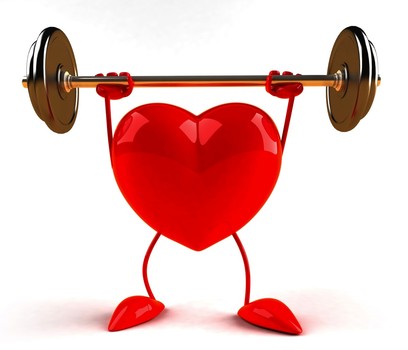Aerobic training, also known as cardiovascular training, which utilizes oxygen by overloading the heart by modes of walking, running, jogging, biking, swimming and every other aerobic physical activity that is known to us today. We think of these aerobic sports as the main modes for cardiovascular health, which is true when reaching a higher intensity that overloads cardiovascular system and can make a difference in cardiovascular health.
However, many people do not realize the benefits of strength training for cardiovascular benefits, rather that it is merely used to build muscle. That is exactly true, building muscle is the case throughout the whole body, but strength training alone can also help with building up the muscle walls of the cardiovascular system, especially the heart muscle which can gain many benefits for the individual that is involved in a strength training program.
Strength training or resistance programs are the bouts of resistance placed on the muscle with a variety of modalities such as body resistance, resistance bands, dumbbells or barbells, weighted balls or medicine balls. As one incorporates strength training into their fitness program, they should see hypertrophy, or muscle building, which is the goal, but over time strength training could help one prevent cardiovascular disease.
As resistance is placed on the body, the blood still needs to flow throughout the body to send oxygenated blood to the tissues and vital organs, but along with this the cardiac muscles that are a part of this resistance is the epicardium (the outer muscle wall of the heart) which is the connective tissue and fat of the heart, which is just above the pericardium which is a sub-layer. In addition, the myocardium (inner muscle wall) consists of the main muscle for contractility, or known as the cardiomyocyte, and the endocardium is a smooth muscle that helps in movement and contraction of the blood flow of the cardiac tissue.
Whether the resistance be over the chest, shoulders or out in front with the arms or legs, there is pressure that is overloading the heart muscle which makes it work harder along with aerobic activity. Pressure, especially from the Valsalva Maneuver, is placed on the cardiovascular system, and placing resistance on the body alone makes the cardiovascular system work harder and, therefore, makes the cardiac muscles work harder and build hypertrophy. As these cardiac muscles pump blood through the cardiac system with resistance training, they become more powerful which helps take in more oxygenated blood and the stroke volume increases with the end result of highly oxygenated blood being pumped out with a hard, single ejection, and the cardio output is the amount of oxygenated blood that is projected per minute.
As stroke volume and cardio output increases with strength training, this overloads the muscular system of the cardiac wall and it can become stronger through strength or resistance training which will put an overload on the cardiac muscle and over time become stronger.
Source: Penile Implant Surgery in India



